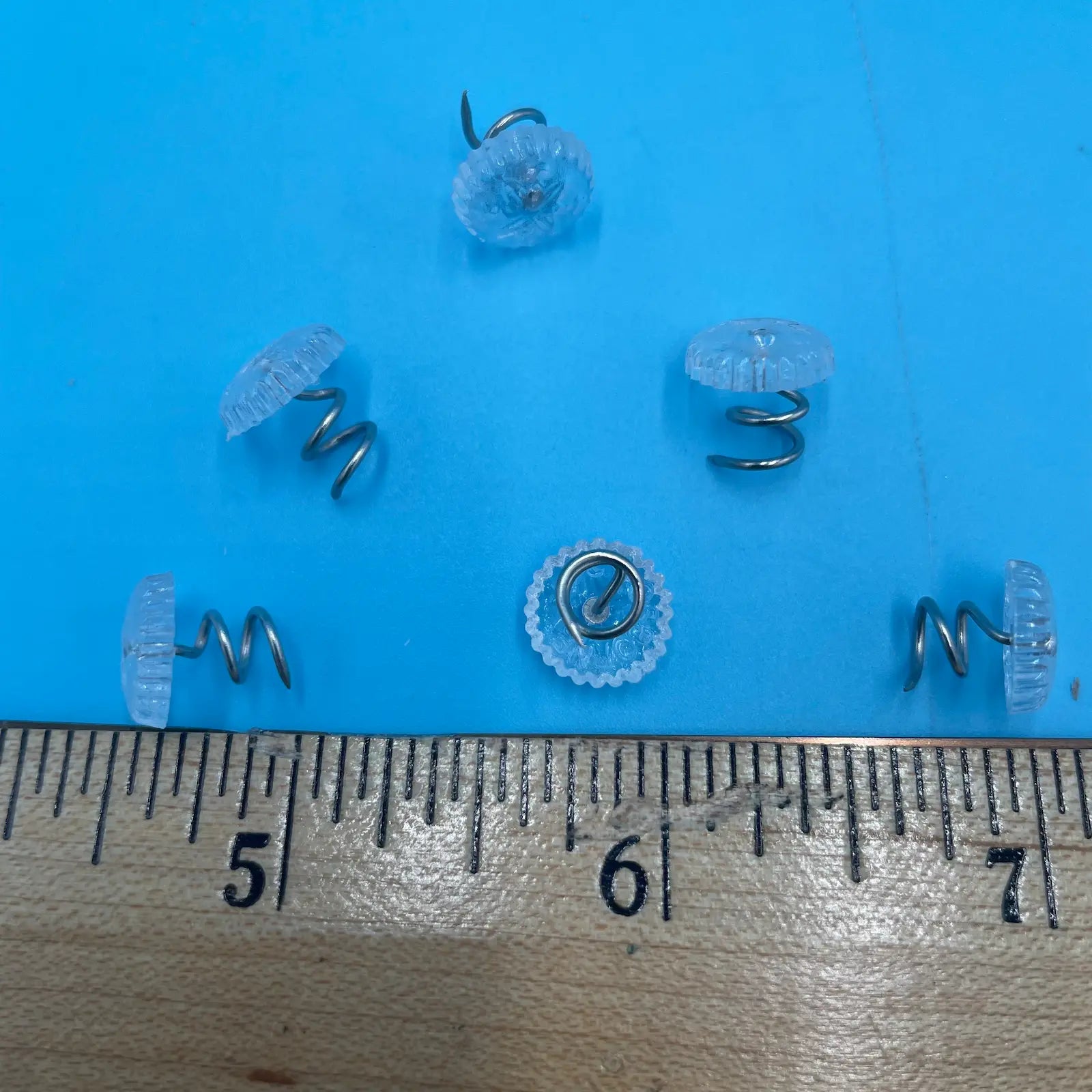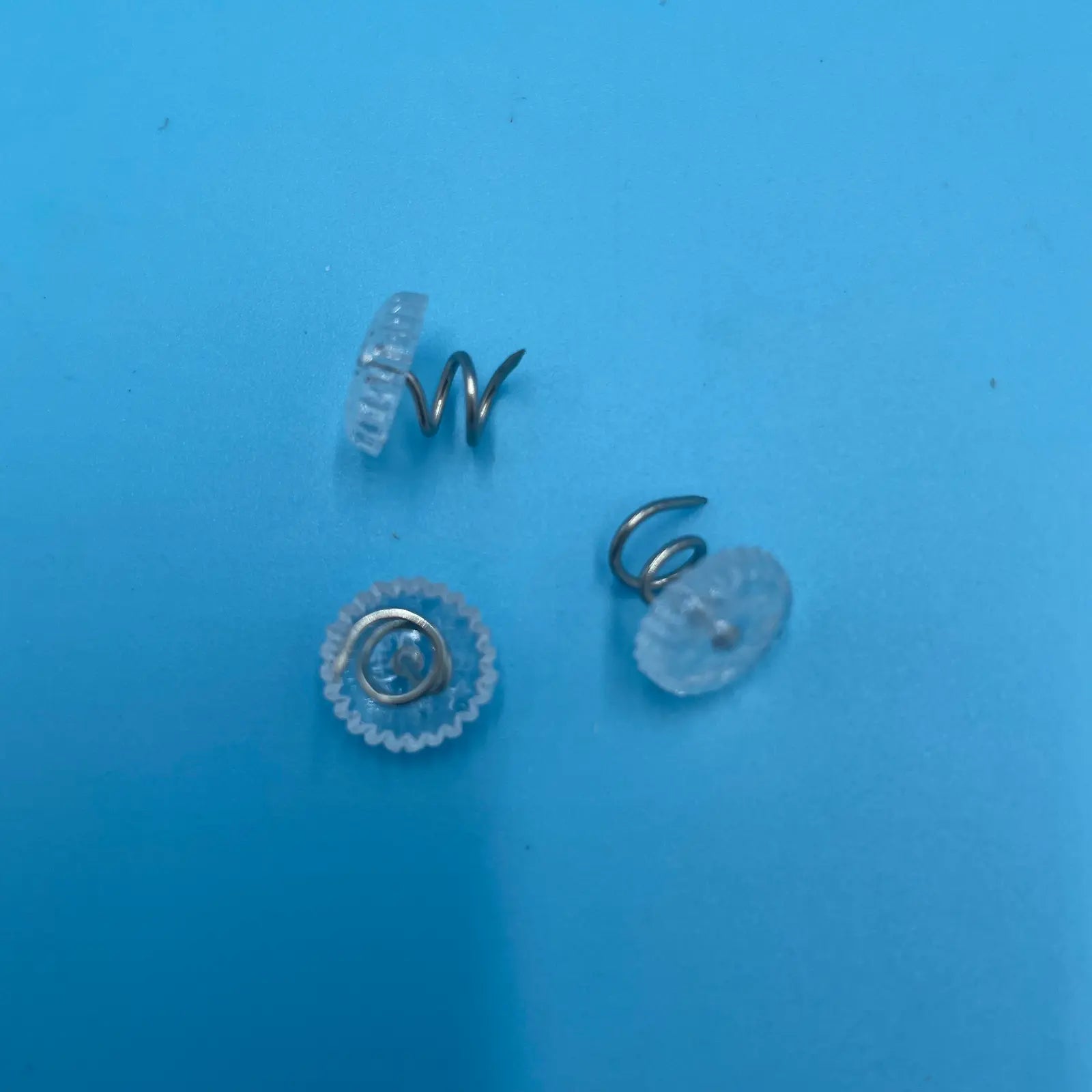Upholstery twist pins, also known as twist upholstery tacks or slipcover pins, are small yet essential tools for anyone working with fabric coverings on furniture or home textiles. Their unique twisted design allows them to hold fabric firmly in place without tearing or causing obvious damage. These pins are typically made from durable metal with a sharp, angled tip and a rounded head, making them practical and nearly invisible once inserted.
Applications:
Twist pins are widely used in securing slipcovers on sofas, chairs, and ottomans, especially when traditional fasteners are insufficient. They are perfect for attaching bed skirts to box springs or securing fabric around cushions, headliners, or drapery. These pins are invaluable in upholstery restoration, providing a clean finish that keeps fabrics taut and wrinkle-free. DIY home decorators, professional upholsterers, and furniture refinishing experts rely on twist pins for their reliability and ease of use.
Benefits of Upholstery Twist Pins:
Unlike staples or heavy-duty tacks, twist pins gently grip fabric, minimizing damage to delicate materials like silk, linen, or cotton blends. Their twisted design distributes pressure evenly, reducing fabric pull and slippage. These pins are especially beneficial in tight or awkward corners where sewing or adhesives would be impractical. They are a reusable option, allowing for easy removal or repositioning when changing fabrics seasonally or during cleaning. Their small profile keeps them discreet, maintaining a polished and professional look on your furniture or textiles.
Durability and Material:
Upholstery twist pins are crafted from rust-resistant metals such as galvanized steel or brass-plated alloys, ensuring long-lasting performance even in humid environments. Their robust construction allows them to penetrate thick upholstery and multiple fabric layers without bending or breaking.
Choosing the Right Twist Pin Size:
Twist pins come in various lengths and thicknesses; selecting the appropriate size is crucial for optimal hold without visible disruption. Longer pins are suited for thicker materials, while shorter pins work well on delicate or thin fabrics.
Care and Installation Tips:
To install, position the pin at the fabric edge and gently twist it into place, allowing the spiral shaft to secure the material. Avoid pushing directly to prevent fabric damage. For best results, use twist pins where fabric gathers or overlaps, such as pleats or hems.
Related Products:
For your larger upholstery projects, you may also be interested in our selection of Upholstery Tools, including tack hammers and webbing stretchers. We also carry a wide variety of Decorative Nails for a more traditional upholstered finish.
How to Use Twist Pins to Secure Upholstery and Slipcovers:
Twist pins, also called tidy pins or slipcover pins, are indispensable for anyone wanting to keep upholstery fabrics firmly in place without any damage. These small, corkscrew-shaped fasteners usually feature a clear or decorative head, making them discreet while providing a strong hold. They are perfect for securing slipcovers, dust ruffles, armrest covers, and bed skirts neatly on your furniture.
Step-by-Step Guide to Using Upholstery Twist Pins:
1. Prepare the Fabric: Begin by smoothing the slipcover or upholstery fabric over your furniture. Tuck any extra fabric neatly into creases or seams to ensure a tight, polished look.
2. Locate Trouble Spots: Identify areas where fabric tends to shift or become loose, such as cushion corners, sofa arms, and the backrest edges. These zones often require extra securing.
3. Pin the Fabric: Hold the fabric firmly in place, then insert the pointed tip of the twist pin right through the upholstery fabric and into the furniture underneath.
4. Twist to Lock: Turn the pin clockwise like a corkscrew. The spiral design firmly anchors the pin into the upholstery, securing the fabric without causing damage. Continue twisting until the pin’s head sits flush against the fabric surface. The subtle, often clear, head blends easily for a neat finish.
5. Add More Pins: For maximum stability, place additional twist pins evenly along any loose areas. Regularly step back to inspect for smoothness and adjust as needed to prevent puckering.
---
Frequently Asked Questions (FAQs):
1. Can upholstery twist pins damage delicate fabrics?
Twist pins are designed to minimize damage. Their twisted design distributes pressure evenly, preventing tears or pulls even on delicate fabrics like silk or velvet.
2. Are twist pins reusable?
Yes, they can be removed and reused multiple times, making them ideal for seasonal fabric changes or slipcover adjustments.
3. What types of fabric are upholstery twist pins best suited for?
They work well on slipcovers, bed skirts, cushions, and light to medium-weight upholstery fabrics including cotton, linen, and synthetic blends.








